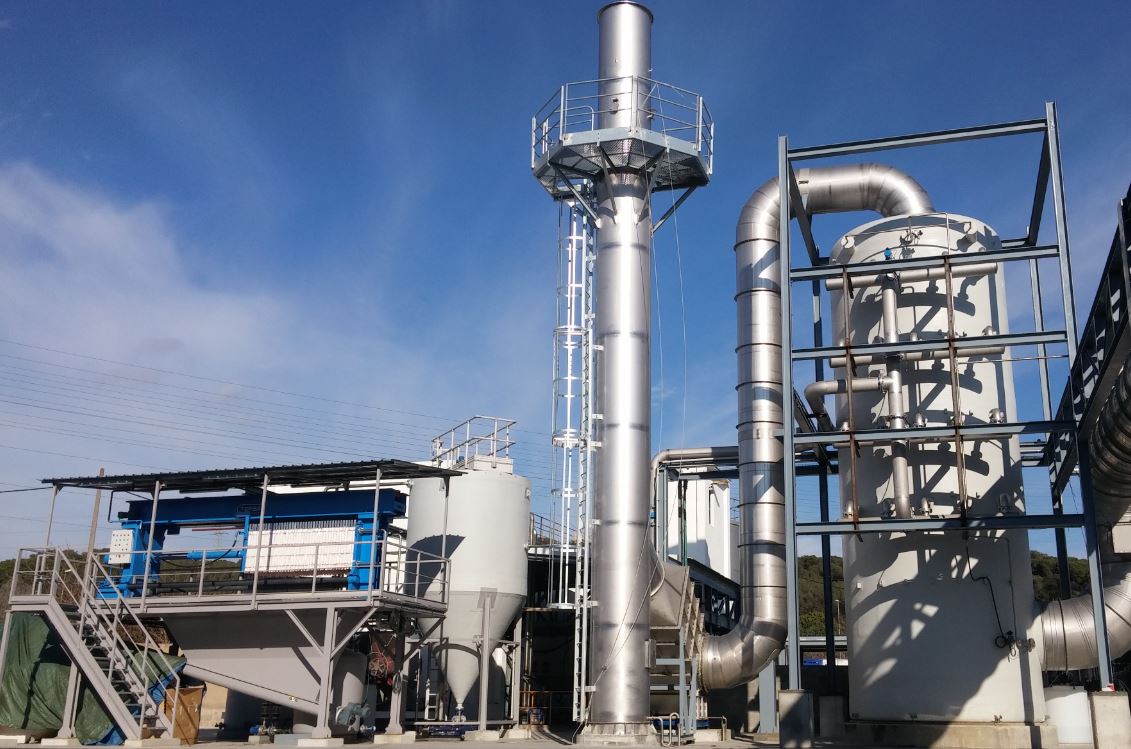The state-of-the-art bioscrubber designed and constructed by AERIS can remove more than 20 kgC/h with efficiency above 98%.
This winter marked the completion of the start-up of a newfangled biological scrubber designed ad hoc by AERIS for a Spanish chemicals industry. The gaseous emissions of this company, with a flow rate above 120.000 m3/h, contained more than 200 mg/m3 of a mixture of hazardous volatile organic compounds (VOCs). The complex nature and variability of this emission led the company management to try different alternatives for its abatement, most of which resulted ultimately unsuccessful or unaffordable.
In search of a technology that could lead to a satisfactory VOCs abatement with reasonable investment and operating costs, the customer contacted AERIS in early 2014. Soon afterwards, a specific biological pilot-scale plant was designed, constructed and installed in the client’s premises. The configuration of this pilot plant was a modified bioscrubber, a biological technology for gas abatement that consists mainly in two different reactors operating simultaneously. The first stage is a chemical scrubber, in which the gaseous VOCs are dissolved in a liquid phase that flows countercurrently. Then, this VOC-laden liquid is fed to the second stage, a liquid-phase bioreactor. In this system the VOCs are biologically oxidized, mostly to carbon dioxide and water. This pilot scale tests were performed for around three months, resulting in valuable information that allowed the scale-up of the industrial-scale system and the identification of a series of performance constraints that needed to be addressed before the implementation of the actual system. A series of key modifications had to be performed on the initial design in order to suit the particular conditions of the off-gas. Namely, the presence of significant amounts of particulate matter, air temperature regularly above 60 ºC and a high variability in the conditions of the emission were specially challenging.
The construction of the industrial-scale bioreactor was completed by the end of 2016. The system showed a VOCs removal efficiency above 98 % soon after the biomass had adapted to the operating conditions, which took less that one week. Since then, the quality of the emitted air has invariably fulfilled the legal requirements set by the Catalan, Spanish and European Normative.
The operation of the novel bioreactor is completely automated, requiring only routinary supervision and minimal maintenance. Operating costs are highly affordable, as no chemicals other than a small amount of N and P salts are required. This all makes this state-of-the-art bioscrubber configuration a reliable and cost-effective improvement with respect to traditional, chemicals-based, alternatives for off-gases treatment.

